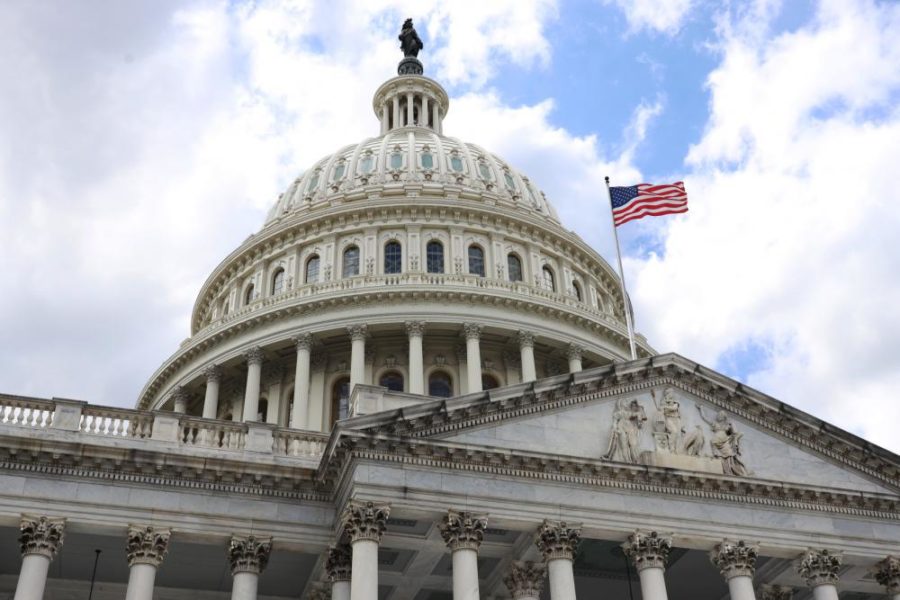One of the Air Force’s top unfunded priorities and a renewed push for a Space National Guard were both approved by the House Armed Services Committee on June 22 as part of the panel’s marathon markup of the 2023 National Defense Authorization Act.
The committee also voted to increase the top line of the 2023 NDAA by $37 billion on top of the $773 billion requested by the Pentagon. But in a concurrent hearing, the House Appropriations Committee, which actually controls the purse strings, voted for a much smaller increase, setting the stage for what is likely to be a fierce debate in the coming months.
Space National Guard
Rep. Jason Crow (D-Colo.) was responsible for introducing the amendment for the Space National Guard, which was included in a package of non-controversial amendments and approved by voice vote.
It’s an issue he tried to address in last year’s NDAA—his amendment then was also approved by the committee, but it contradicted language in the Senate Armed Services Committee’s version of the bill, and when it came time for leaders to draft a compromise version, it was left out.
The White House’s Office of Management and Budget has also come out against a separate Space Guard, releasing a statement of administration policy saying it “strongly opposes” such a move as it would create unnecessary bureaucracy and increase costs by up to $500 million annually. The Space Force, meanwhile, has proposed creating a “Space Component” that is a combined hybrid of full-time and part-time Guardians.
In May, though, a bipartisan group of Senators introduced legislation that would create a Space National Guard, formed from the eight states and territories that currently have Air National Guard units with space missions. Advocates say a new entity is needed because members of those Air National Guard units don’t have a direct connection with the Space Force and have essentially been “orphaned” by the Air Force, and argue that the costs have been overestimated.
But while Crow’s amendment would seem to have some support in the Senate, the SASC did not address the issue in its own markup of the 2023 NDAA. Should the House and Senate adopt their respective versions of the bill unchanged, a conference committee will have to draft a compromise.
Unfunded Priorities Partially Fulfilled
The second-highest unfunded priority the Air Force included in the annual list it sent to Congress in April was also its most expensive one—$978.5 million to procure four more EC-37B Compass Call electronic warfare aircraft.
That ask was, for the most part, fulfilled as part of a sweeping amendment offered by Rep. Jared Golden (D-Maine) and approved in a 42-17 vote. Golden’s amendment provides $884 million for four additional aircraft to bring the total fleet to 10. It also puts the HASC’s bill in line with its Senate counterpart.
Golden’s amendment also partially addresses what the Air Force identified as its top unfunded priority—$579 million for weapons system sustainment—by adding on nearly $379 million.
Other unfunded priorities, however, such as the addition of seven more F-35As to the Air Force’s buy of 33, were not included in Golden’s amendment nor the HASC chairman’s mark. The House Appropriations Committee also did not change the F-35’s procurement this year, despite protests from Rep. Chris Stewart (R-Utah) and Rep. Tom Cole (R-Okla.), who called the total of 61 aircraft “simply not enough to keep up with what we’re facing.”
Top line
The main impact of Golden’s amendment was to increase the top line of the 2023 NDAA by $37 billion, nearly 4.8 percent. A large chunk of that increase is devoted to combatting the effects of rising inflation, a common theme throughout this year’s budgeting process.
In particular, Golden’s amendment would give an “inflation bonus” of 2.4 percent to service members making less than $45,000, an addition projected to cost $800 million. Another $6 billion or so is devoted to addressing inflation’s impact on military construction and fuel costs.
But while the House Armed Services Committee is ready to boost spending, the House Appropriations Committee is not. The key panel stuck with the total of $762 billion in the 2023 NDAA (which doesn’t include military construction) proposed by defense subcommittee chair Rep. Betty McCollum (D-Minn.), a total that is roughly in line with the Pentagon’s request.
“What we choose to spend our defense dollars on is … incredibly important. We must modernize our force to compete with our peer adversaries, but the latest weapon systems and platforms are only effective if they can be used appropriately and if they can be maintained appropriately and in the long term,” McCollum argued.
Rep. Adam Smith (D-Wash.), the chair of the HASC, made a similar argument in his committee hearing, pushing back against proponents who say that maintaining large numbers of less capable platforms has a quality of its own.
“That’s one of the dumbest damn things I’ve ever heard,” Smith said. “If I have 100 different things that are incapable of doing anything, you’re not better off if you have 200. Now we can debate whether there is quality here … but please don’t give this ‘Well, we’ve got a lot of them, so we must be in good shape, right?”
Smith and McCollum, however, will face opposition from Republicans—and some Democrats—who want to increase defense spending. Indeed, HASC’s $37 billion increase is actually smaller than the $45 billion added by the committee’s Senate counterpart; and Rep. Elaine Luria (D-Va.), who voted for Golden’s amendment, called the $37 billion “a start,” adding that she hoped the compromise process with the Senate would land on a total “somewhere north” of it.
